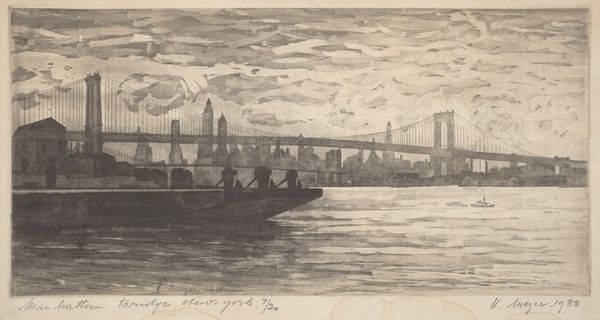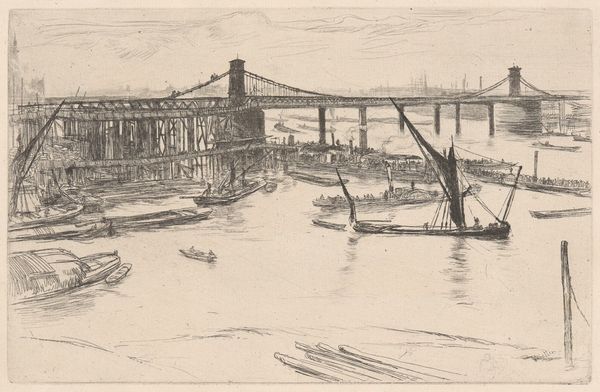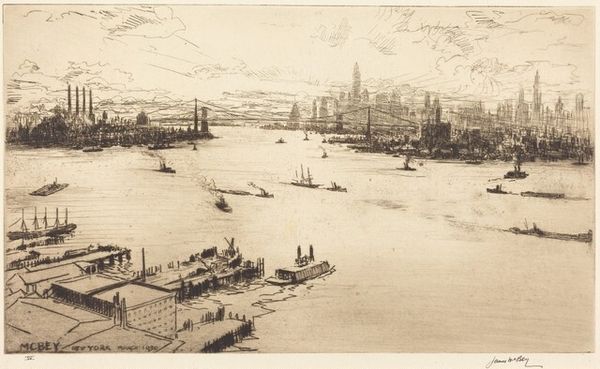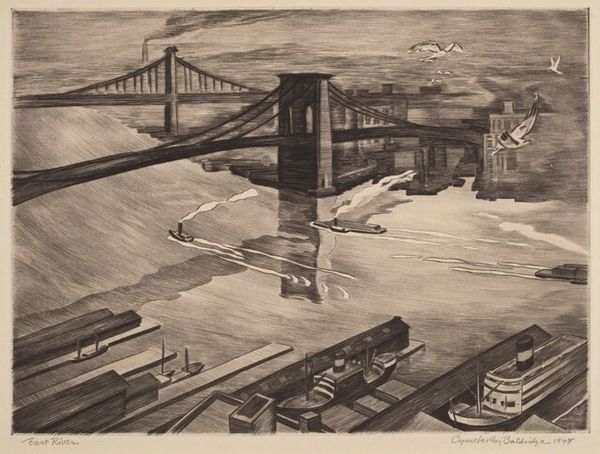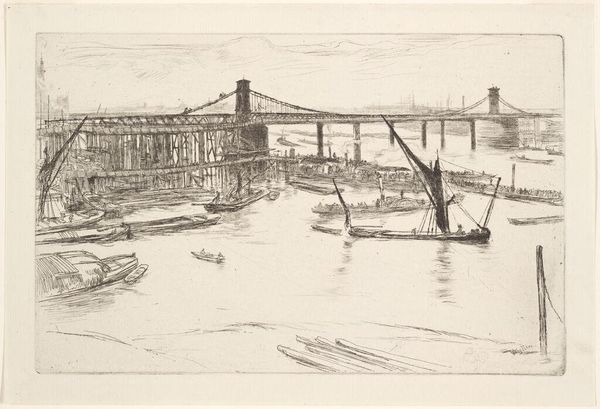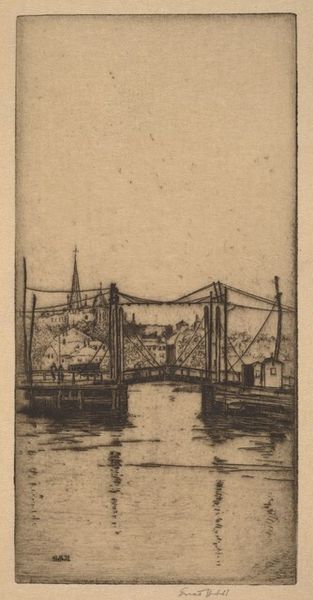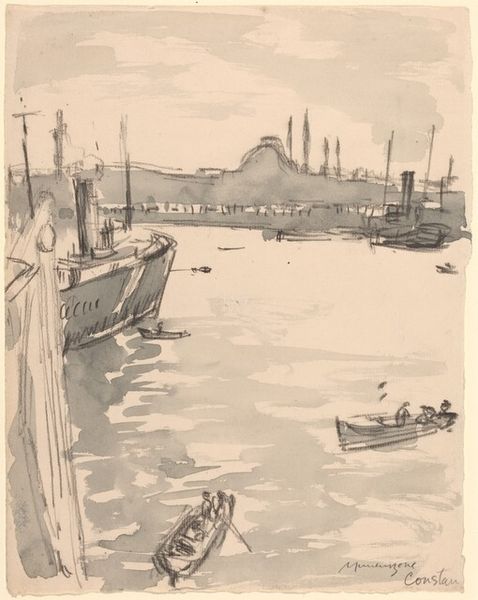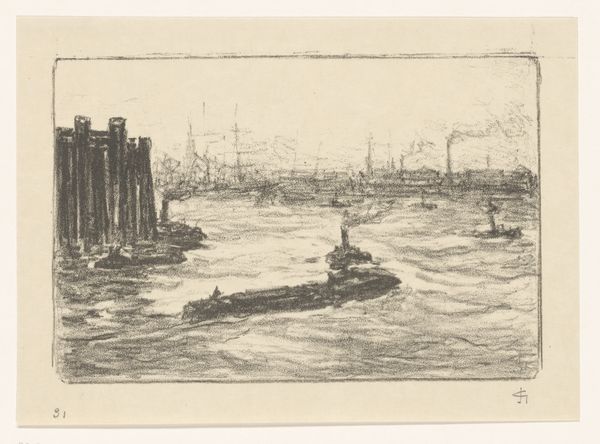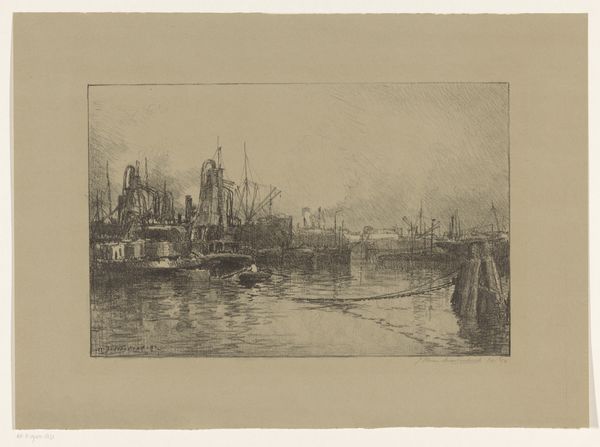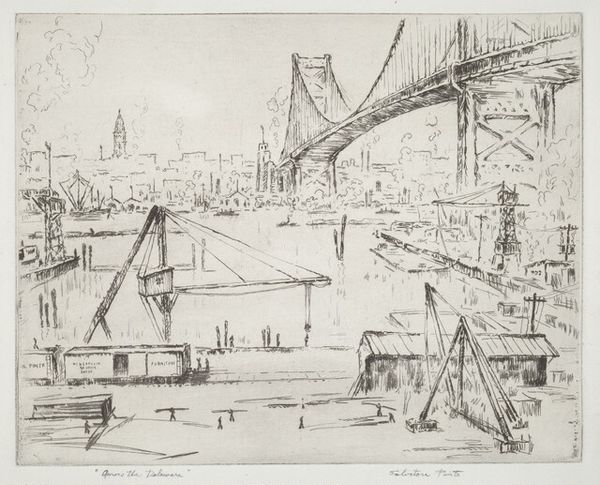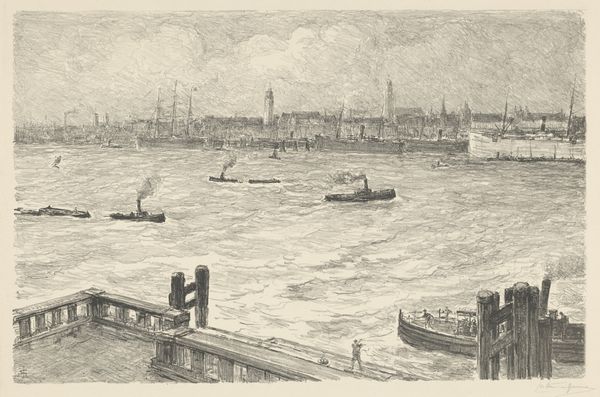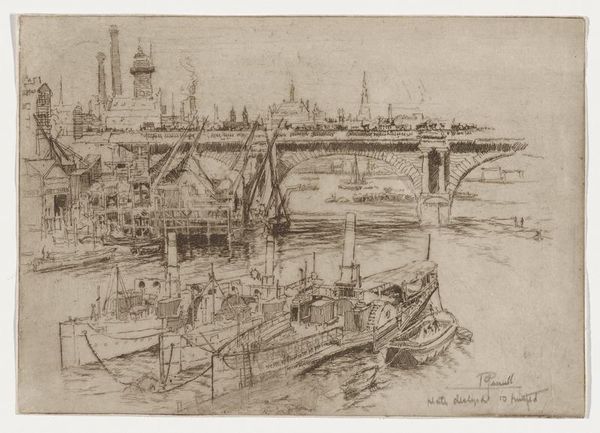
drawing, pencil
#
drawing
#
pen sketch
#
pencil sketch
#
landscape
#
pencil
#
cityscape
Dimensions: overall: 13.5 x 21.1 cm (5 5/16 x 8 5/16 in.)
Copyright: National Gallery of Art: CC0 1.0
Curator: This is Muirhead Bone’s “Hell Gate Bridge, Brooklyn,” a pencil and pen drawing. Editor: Stark and utilitarian. All those verticals – smokestacks, rigging – offset by the elegant curve of the bridge. Curator: Absolutely. Bone often focused on industrial subjects. It is interesting how this rendering foregrounds the structures facilitating material exchange – note all the maritime infrastructure here. This bridge would have facilitated the transportation of materials and people, a concrete testament to labor and industry. Editor: True. Though it’s hard to ignore the skillful balance of form here: the solidity of the structures offset by the fluidity of the water rendered in subtle variations of tone. The ripples become more than just surface reflections, creating almost abstract patterns. Curator: These weren't simple aesthetic exercises though; Bone was commissioned during both World Wars. We must ask about the social conditions underpinning these images – in particular labor rights, propaganda and its reception, the economic realities of wartime production. Editor: Yes, and I can’t help but see a commentary on human ingenuity itself: The geometric precision of the bridge arch against the seemingly limitless expanse of the sky. Bone plays with perspective, drawing the viewer's eye toward the industrial skyline. Curator: But we must be mindful not to celebrate infrastructure blindly. It can be complicit in systems of exploitation or marginalization, especially considering the communities displaced, exploited, and underpaid during its construction. Editor: That’s an important point. Yet as I study the sketch, the layering of the pen lines draws my attention. They offer a unique sense of depth, and the shading builds texture which helps distinguish different architectural features of the site. Curator: Bone's skill lies in representing, aestheticizing perhaps, a specific period of urban expansion, the relationship between labor, technology, and national identity. It raises critical questions about whose stories get told and at whose expense. Editor: I see now the nuances between technical documentation and artistic interpretation; the work encapsulates human capacity – for better or worse – through structural rendering. Curator: Exactly. And understanding Bone's motivations can deepen our own reflections on industrial progress, materiality and power in this era.
Comments
No comments
Be the first to comment and join the conversation on the ultimate creative platform.

